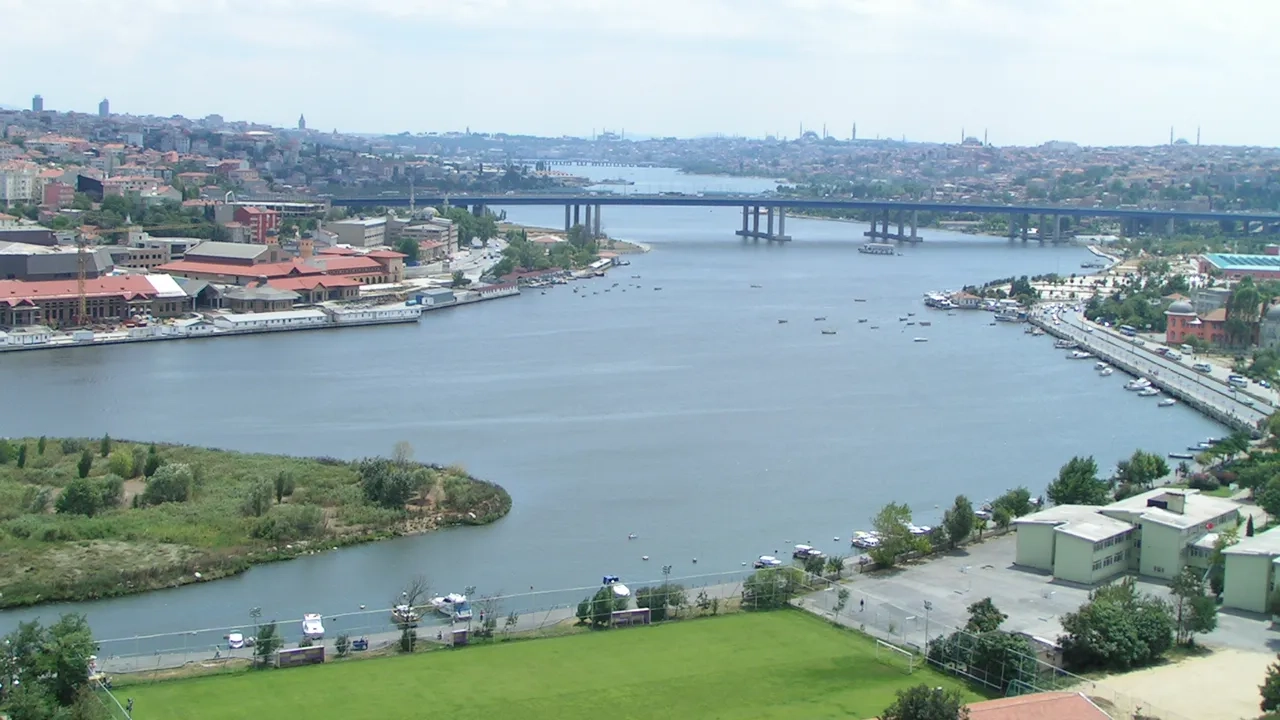
Top 5 UNESCO-Listed Archaeological Sites in Türkiye to Visit
Turkey is rich in a multilayered cultural landscape that is rarely found with such density in a single country: ancient cities that flourished along trade routes, capitals of successive empires, and religious and civic architecture bearing witness to a confluence of civilizations from the Hittites to the Ottomans. This guide is designed for the knowledge-seeking traveler who wants to understand why these sites were inscribed on the World Heritage List: what stories they tell and how they stand out from others.
1– Troy: A Living Legend with Archaeological Layers
Troy stands as one of the most famous legendary and historical cities in the world, with a history spanning more than 4,000 years. Excavations since the 19th century have revealed multiple layers of cities built one atop another, embodying the earliest documented contact between Anatolia and the wider Mediterranean world. Homer immortalized the memory of the Trojan War in the 13th century BCE in his epic, the Iliad—an event that has inspired artists across the centuries.
Walking along the ancient walls of Troy today is to follow in the footsteps of the heroes of the Iliad; the remains of its massive stone fortifications still stand, bearing witness to its glorious past. Myth tells that the gods Poseidon and Apollo built these walls and bestowed upon them their strength. In Troy you will sense the fragrance of myth and history—this city, a cultural bridge between the Aegean and Anatolia, has fired human imagination since antiquity.
A visit to Troy today offers a journey back in time into a world of legend. Visitors can contemplate the remains of the Temple of Athena and the Roman theatre and learn about the city’s nine layers, ranging from the Bronze Age to the Roman period. Don’t miss a photo by the wooden Trojan Horse at the site entrance—a symbolic replica erected in 1975 as a re-creation of the fabled ruse used by the Greeks to infiltrate the city after a long siege. Imagine the soldiers hidden inside this colossal wooden horse and how their stratagem ended a ten-year war. In Troy you will sense the overlap of myth and reality: every stone and corner tells part of the story of the famous Trojan War and spurs you to imagine its feats, making it an unforgettable, living experience for lovers of history and culture.
Location of Troy Historical National Park on Google Maps
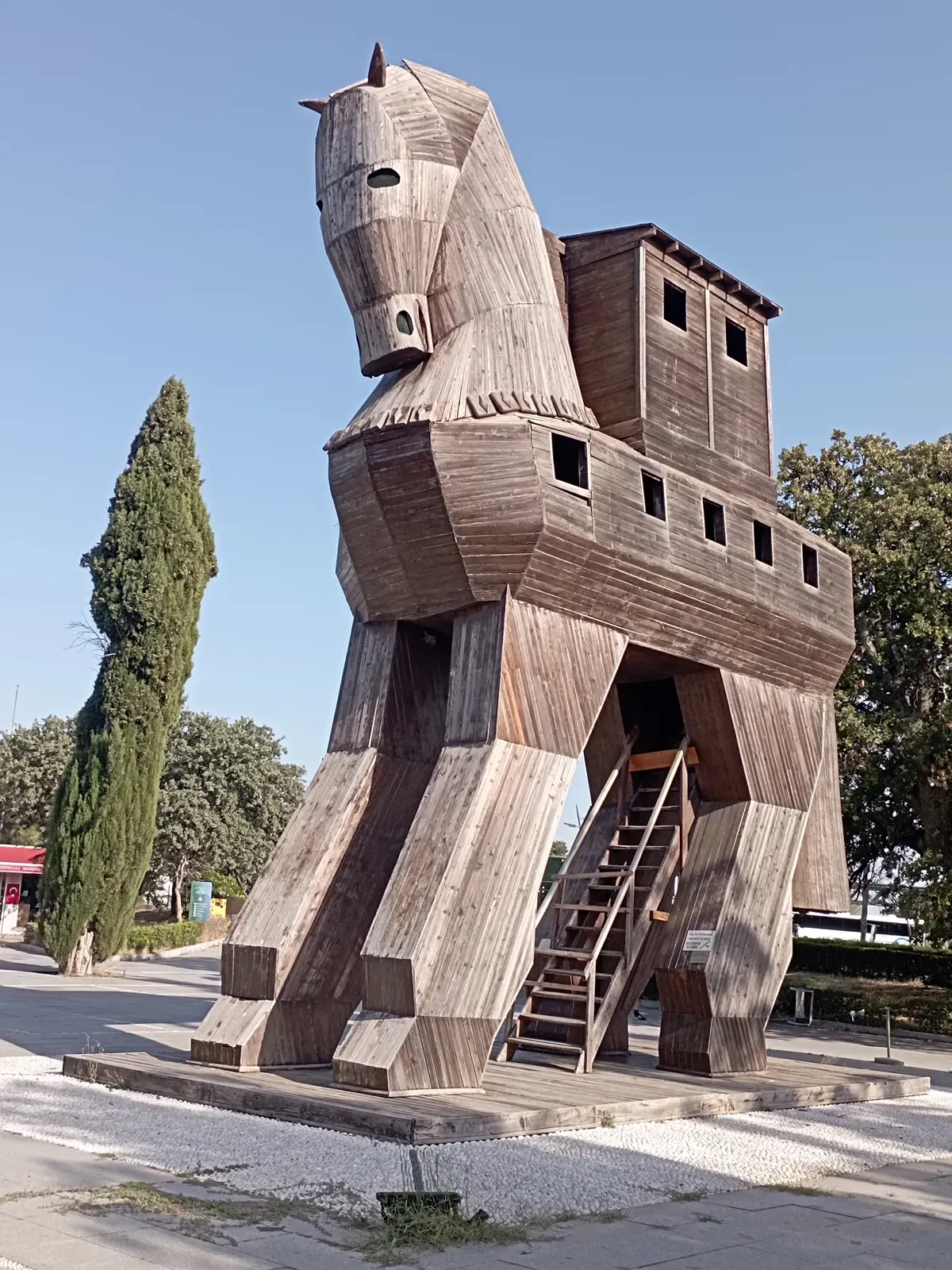
2– Bursa and the Village of Cumalıkızık: Birth of the Ottoman State
Nestled on the slopes of Mount Uludağ in northwestern Anatolia lies the historic city of Bursa, watched over by the rural village of Cumalıkızık. Together, they represent the cradle of the nascent Ottoman state in the early 14th century. Bursa was the first capital of the Ottoman Empire and flourished as a political and spiritual center thanks to innovative urban-planning systems adopted by the early sultans. The city was distinguished by comprehensive charitable complexes (waqf-based) built around mosques, schools, baths, and public kitchens; these complexes were called “külliyes,” and each formed the nucleus of a new neighborhood. To this day you can see such historic complexes—like the Yıldırım Bayezid Complex and the Murad II Complex—which outlined the borders of old Bursa and established a unique Ottoman architectural style known as the “Bursa style,” notable for mosques with an inverted-T plan. Bursa’s spiritual roots also run deep in the presence of the tombs of the state’s founders: Osman Gazi and his companion Orhan Gazi rest in this city’s soil.
As you wander through Bursa, you can visit the Great Mosque (Ulu Camii), with its towering minarets and historic inscriptions, and the historic Silk Bazaar (Koza Han), still alive with the spirit of Ottoman trade. On every corner you sense the aura of beginnings, for this city witnessed the birth of a great empire. A short distance away lies the village of Cumalıkızık, with its authentic rural beauty and stone-and-timber houses dating back to the state’s founding era. Cumalıkızık is the best-preserved example of an Ottoman waqf village whose resources were dedicated to supporting a religious complex in Bursa (the Orhan Gazi Complex). Visitors can stroll its cobblestone alleys between 700-year-old houses and savor a traditional village breakfast that carries you back to a simpler time.
Visiting Bursa and Cumalıkızık is a vivid journey through living history; you’ll touch the spirit of the Ottomans’ formative era and imagine the drive of the early sultans in every mosque, lodge, and market. This blend of the grandeur of dynastic monuments and the warmth of village life makes them an inspiring destination inviting you to discover the roots of Ottoman civilization with real enthusiasm.
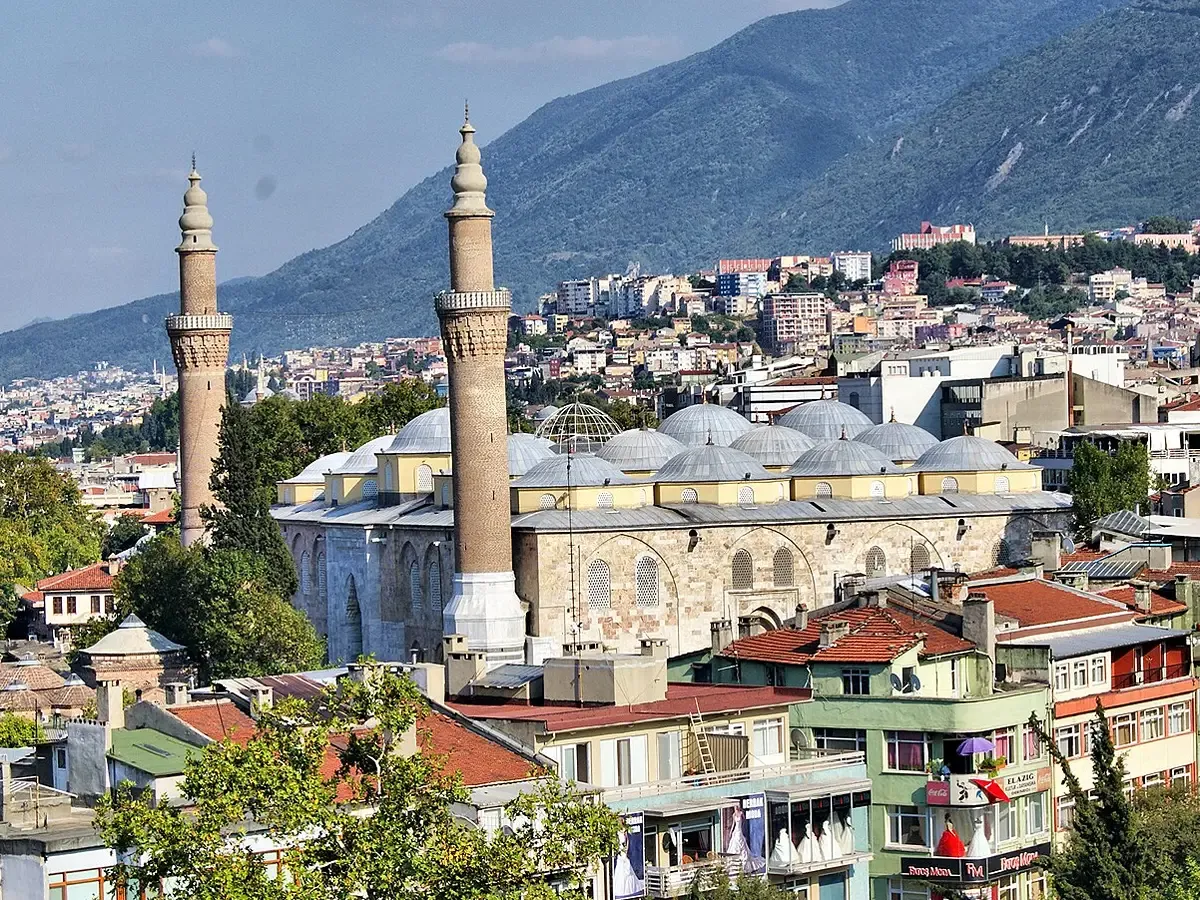
3– Diyarbakır Fortress and the Hevsel Gardens: Basalt Walls and the Tigris Gardens
On the banks of the Tigris River in Upper Mesopotamia rise the imposing walls of Diyarbakır Fortress, telling the story of a city defying time. Diyarbakır has been a major cultural center since the Hellenistic period and continued to flourish through the Roman, Sasanian, Byzantine, Islamic, and Ottoman eras without interruption. The city is encircled by colossal black-basalt walls stretching 5.8 kilometers, with more than 80 towers and four main gates, and bearing 63 inscriptions from different historical periods—among the world’s longest and most magnificent historic city walls. Within them lies İçkale (the Inner Fortress), which housed princes’ palaces across the ages. Diyarbakır endured as an impregnable stronghold for successive civilizations, making it a vibrant mirror of cultural and religious diversity throughout history in the heart of the Fertile Crescent.
A visit to Diyarbakır is not complete without a stroll along its ancient ramparts and a panoramic gaze over the green Hevsel Gardens below. These historic gardens, stretching between the city and the Tigris, were a lifeline providing the people of Diyarbakır with fruit, vegetables, and water over the centuries. Visitors can wander Hevsel’s parks, where the sounds of nature mingle with the enduring stones of the walls. Inside the old town you’ll discover venerable mosques like the Great Mosque, historic churches, and traditional markets that together reflect the city’s multicultural heritage. Climb one of the old towers—such as Keçi Burcu (the Goat Tower)—and watch the golden sunset casting its shadows over the Tigris and the Hevsel fields. Diyarbakır’s atmosphere blends the awe of history with the fecundity of nature, inviting you to dive into a thousand years of civilization. You will leave inspired, having witnessed walls unbroken by the centuries and the fertile earth that sustained this legendary city.
Location of Diyarbakır Fortress on Google Maps
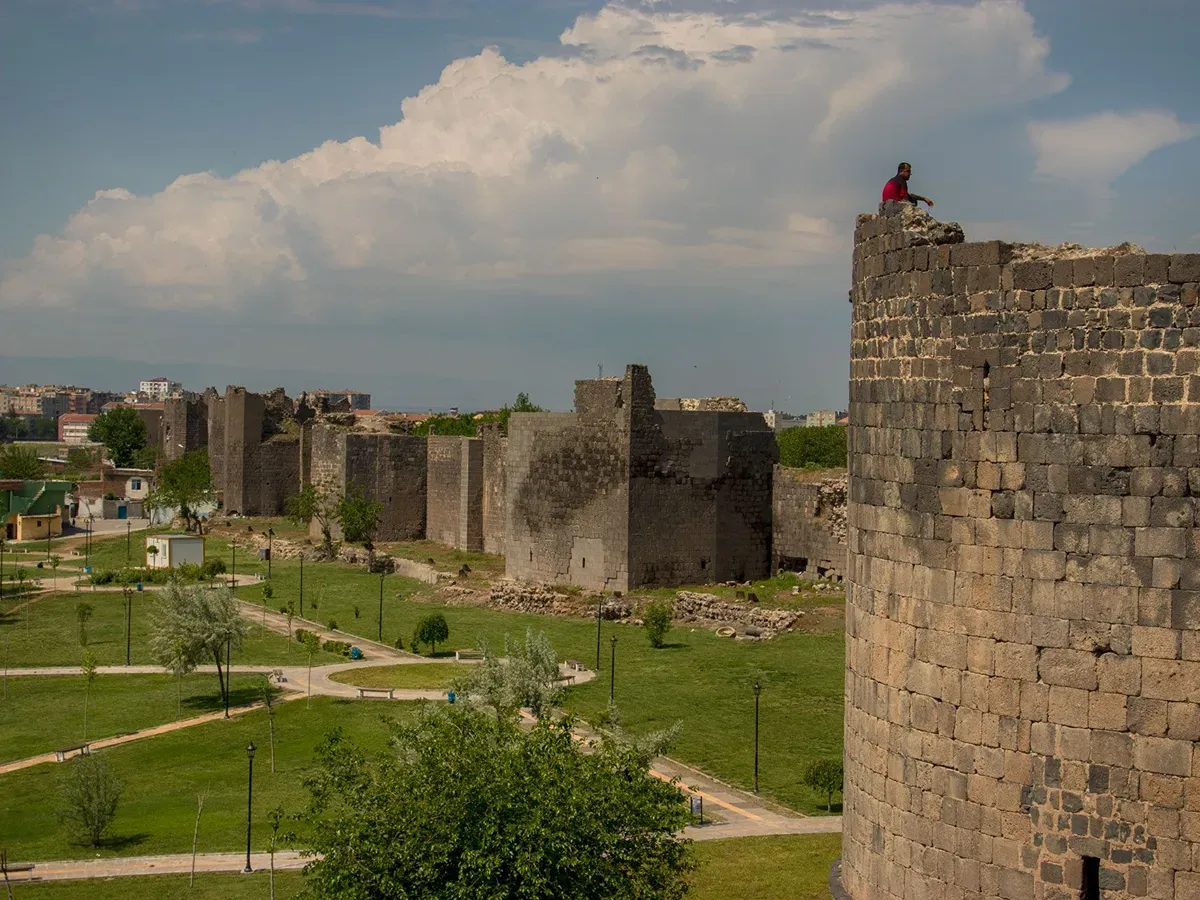
4– Ephesus: An Open-Air Museum from the Hellenistic to the Roman Periods
Ephesus takes you on a journey into the world of the great cities of the Hellenistic and Roman eras. This ancient coastal city was one of the foremost urban centers of Asia Minor and a significant commercial and spiritual hub for both the Greek and Roman empires. Excavations have revealed the ornate façade of the Library of Celsus (Celsus Library), which still stands, and the Great Theatre that could seat thousands; it is believed that the Apostle Paul addressed the Ephesians here in ancient times. You will also find the column bases and remains of the famed Temple of Artemis—one of the Seven Wonders of the Ancient World—which drew pilgrims from across the Mediterranean. In Ephesus’s environs lie the ruins of the Basilica of St. John and a Byzantine fortress, as well as the House of the Virgin Mary on a nearby hillside, now a revered pilgrimage site for Christians. This interplay of pagan and Christian heritage gives Ephesus a richly layered cultural character of global significance.
As you walk along Ephesus’s gleaming marble streets, still remarkably preserved, you’ll feel as if you are moving alongside its ancient citizens. Pass under the arch of the Gate of Hercules and continue along Curetes Street between the columns of temples and Roman baths. The Library of Celsus façade will captivate you with its sculptures and Greek inscriptions, standing since the 2nd century CE. Continue to the Great Theatre and climb its steps; from there, imagine the scene two millennia ago when an audience of fifty thousand gathered to hear speeches and watch performances. Nearby, visit the site of the Temple of Artemis and picture the marble columns that once rose to welcome pilgrims in awe. Visitors can also head up to the tranquil House of the Virgin Mary for unique views from the hilltop.
Ephesus is far more than silent ruins; it is a city that breathes history. In its lanes echoed the footsteps of saints, upon its stage thundered orators’ voices, and beneath the shade of its temples legends were woven. Visiting Ephesus is an immersive experience in every sense—one that leaves you filled with the splendor of classical civilization and the greatness of human heritage.
Location of the Ephesus Archaeological Site on Google Maps
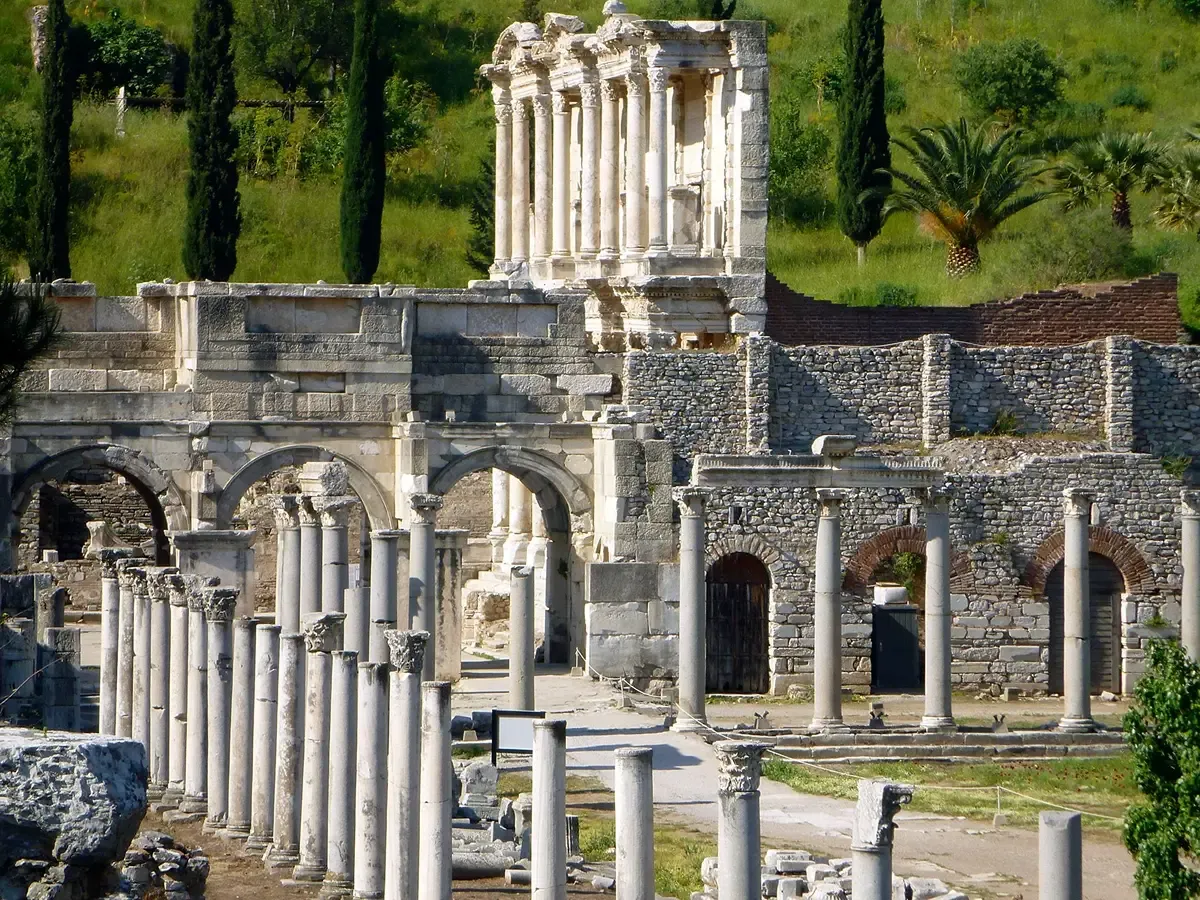
5– Aphrodisias: Capital of Marble and Art
In a fertile valley encircled by mountains in southwestern Türkiye lie the treasures of the ancient city of Aphrodisias, named after Aphrodite, the Greek goddess of love and beauty. In the Greek and Roman eras, Aphrodisias was a distinguished artistic and cultural center, famed for its marble-sculpture school whose works dazzled the ancient world. The massive Temple of Aphrodite in the heart of the city dates to the 3rd century BCE, and the settlement developed around it from the 2nd century BCE onward. The presence of rich marble quarries nearby endowed Aphrodisias with exceptional wealth: these quarries supplied the pristine stone used by the city’s master sculptors to create statues and reliefs that spread across the Roman Empire.

A visit to Aphrodisias today is like touring an open-air museum pulsing with classical art. Begin at the famous Tetrapylon—an ornate four-way monumental gateway that once led to the sanctuary of Aphrodite. Its decorative columns and beautiful carvings have been re-erected, recovering something of their original splendor; passing beneath them, you’ll sense the grandeur that greeted pilgrims two thousand years ago. Then head to the marble monuments, especially the Temple of Aphrodite, which was converted in the 6th century CE into a Christian cathedral—an astonishing blend of a pagan temple’s architecture with church features, a rare example of the transformation of sacred spaces over time. Don’t miss the theatre on the slope of the small acropolis, with its semicircular seating carved into the rock, overlooking a stage that hosted performances and political speeches in the Roman period. Nearby you’ll find the so-called Archive Wall displaying important official inscriptions, including imperial decrees recognizing Aphrodisias’s special status as a tax-exempt city in honor of its stature.
Among Aphrodisias’s most impressive monuments is the vast stadium, which holds about 30,000 spectators and stretches 270 meters in an oval shape. Walk along its track and imagine yourself amid the crowds who watched athletic contests here two millennia ago—the pulse of ancient life will accompany you on your tour. Finally, visit the Aphrodisias Museum adjacent to the site, where original marble statues and reliefs are displayed, including imperial portraits and a unique local cult statue of Aphrodite herself. By the end of your visit, you’ll understand why Aphrodisias is a hidden gem among Türkiye’s archaeological sites: its pastoral tranquility and breathtaking artistic heritage give visitors a sense of serenity and inspiration. It is an ideal destination for lovers of history and art, where the legend of Aphrodite meets the masterpieces of human creativity in a harmony unlike anywhere else.
Location of the Aphrodisias Archaeological Site on Google Maps

In conclusion, Türkiye’s archaeological sites offer a concentrated journey through layers of living beauty and history. Choose your route according to your preferred travel season and set aside time to contemplate the architectural details and the stories the stones tell. Use the map links we’ve included to reach the sites, and balance cultural immersion with open-air activities at each location. Returning from this journey means carrying a deeper memory of human heritage and a genuine desire to discover more.
Read also:









